Papers by Omid Yazdanpanah
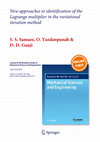
Journal of the Brazilian Society of Mechanical Sciences and Engineering, 2014
ABSTRACT In this paper, new methods to obtain the Lagrange multiplier are presented. Differential... more ABSTRACT In this paper, new methods to obtain the Lagrange multiplier are presented. Differential equation consists of linear and nonlinear parts. We have infinite equations that the linear parts of them are different together then any of the equations have different Lagrange multipliers. In this article, steps of the proposed methods are fully described manually. In this paper, we show that the proposed methods attain precisely the Lagrange multipliers. Exact identification of Lagrange multipliers in the VIM is very important for obtaining highly accurate solutions; on the other hand, it is complicate to determine the multipliers for strongly nonlinear equations. Lagrange coefficient is a parameter that is used in VIM. Therefore, this study introduces a simple and efficient way to solve Lagrange coefficient. The results show that all three methods obtain the Lagrange coefficient without any errors and manually are solved easily.
International Journal of Computer Mathematics, 2014
ABSTRACT In this paper, homotopy perturbation method (HPM) and variational iteration method (VIM)... more ABSTRACT In this paper, homotopy perturbation method (HPM) and variational iteration method (VIM) are used to solve the large amplitude torsional oscillations equations in a nonlinearly suspension bridge. This paper compares the HPM and VIM in order to solve the equations of nonlinearly suspension bridge. A comparative study between the HPM and VIM is presented in this work. The achieved results reveal that the HPM and VIM are very effective, convenient and quite accurate to nonlinear partial differential equations. These methods can be easily extended to other strongly nonlinear oscillations and can be found widely applicable in engineering and science. The Laplace transform method is applied to obtaining the Lagrange multiplier in the VIM solution.

In this paper, a crack localization method for Euler-Bernoulli beams via an efficient static data... more In this paper, a crack localization method for Euler-Bernoulli beams via an efficient static data based indicator is proposed. The crack in beams is simulated here using a triangular variation in the stiffness. Static responses of a beam are obtained by the finite element modeling. In order to reduce the computational cost of damage detection method, the beam deflection is fitted through a polynomial function using a limited number of nodal displacements. A damage indicator based on static responses obtained for healthy and damaged structure is proposed to identify the damage. Three test examples including a simply supported beam, an overhanging beam and an indeterminate beam are considered. The influence of many parameters may affect the efficiency of the method such as the number of elements, the value, type and location of applied load as well as the noise effect is investigated. Numerical results show that, the locations of single and multiple damage cases having different characteristics can be well determined by the method proposed.
In this study, the efficiency of differential evolution (DE) as a global optimization algorithm f... more In this study, the efficiency of differential evolution (DE) as a global optimization algorithm for solving the problem of structural damage detection is assessed. The damage detection problem is first transformed into a standard optimization problem, then, the DE is utilized to solve the optimization problem for finding the damage variables. Some benchmark examples are selected from the literature to test the performance of the algorithm. Numerical results demonstrate that the DE can achieve the global solutions of the problems for most optimization runs when comparing with the particle swarm optimization (PSO) algorithm.
In this paper, homotopy perturbation method (HPM) and parameterized perturbation method (PPM) are... more In this paper, homotopy perturbation method (HPM) and parameterized perturbation method (PPM) are used to solve the radius of curvature beam equation. This paper compares the HPM and PPM in order to solve the equations of curvature beam. A comparative study between the HPM, PPM and numerical method (NM) is presented in this work. The validity of our solutions is verified by the numerical results. The achieved results reveal that the HPM and PPM are very effective, convenient and quite accurate to nonlinear partial differential equations. These methods can be easily extended to other strongly nonlinear oscillations and can be found widely applicable in engineering and science.

An efficient method employing the differential evolution algorithm (DEA) as an optimisation solve... more An efficient method employing the differential evolution algorithm (DEA) as an optimisation solver is presented here to identify the multiple damage cases of structural systems. Natural frequency changes of a structure are considered as a criterion for damage occurrence. The structural damage detection problem is first transformed into a standard optimisation problem dealing with continuous variables, and then the DEA is utilised to solve the optimisation problem for finding the site and extent of structural damage. In order to assess the performance of the proposed method for structural damage identification, some illustrative examples are numerically tested, considering also measurement noise. All the numerical results demonstrate the effectiveness of the proposed method for accurately determining the site and extent of multiple-structural damage. Also, the performance of the DEA for damage detection compared to the standard particle swarm optimisation is confirmed by a test example.
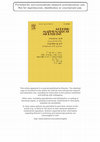
This article appeared in a journal published by Elsevier. The attached copy is furnished to the a... more This article appeared in a journal published by Elsevier. The attached copy is furnished to the author for internal non-commercial research and education use, including for instruction at the authors institution and sharing with colleagues. Other uses, including reproduction and distribution, or selling or licensing copies, or posting to personal, institutional or third party websites are prohibited. In most cases authors are permitted to post their version of the article (e.g. in Word or Tex form) to their personal website or institutional repository. Authors requiring further information regarding Elsevier's archiving and manuscript policies are encouraged to visit: http://www.elsevier.com/authorsrights a b s t r a c t An efficient method is proposed to find multiple damage locations in structural systems. The change of static strain energy (SSE) due to damage is used to establish an indicator for determining the damage location. The SSE is determined using the static analysis information extracted from a finite element modeling. In order to assess the performance of the proposed method for structural damage detection, some benchmark structures having a number of damage scenarios are considered. Numerical results demonstrate that the method can accurately locate the structural damage when considering the measurement noise. The efficiency of the proposed indicator for finding the damage site is also compared with a modal strain energy based index (MSEBI) provided in the literature.
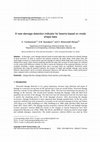
In this paper, a new damage indicator based on mode shape data is introduced to identify damage i... more In this paper, a new damage indicator based on mode shape data is introduced to identify damage in beam structures. In order to construct the indicator proposed, the mode shape, mode shape slope and mode shape curvature of a beam before and after damage are utilized. Mode shape data of the beam are first obtained here using a finite element modeling and then the slope and curvature of mode shape are evaluated via the central finite difference method. In order to assess the robustness of the proposed indicator, two test examples including a simply supported beam and a two-span beam are considered. Numerical results demonstrate that using the proposed indicator, the location of single and multiple damage cases having different characteristics can be accurately determined. Moreover, the indicator shows a better performance when compared with a well-known indicator found in the literature.

In this paper, a newdamage indicator based onmodal data, such as mode shapes and its derivatives,... more In this paper, a newdamage indicator based onmodal data, such as mode shapes and its derivatives, is presented for damage identification in plate-like structures. The proposed indicator is determined using modal
analysis information extracted from a finite element code in MATLAB. After obtaining the mode shapes, the slope and curvature of the plate in each mode are calculated based on central finite difference methods. A
numerical example with and without noise is considered to evaluate the exact location of different damage scenarios. In order to validate the proposed indicator for structural damage detection, the obtained results have been compared with another study which was based on experimental data. Moreover, in order to better assess the performance of the proposed indicator, a comparison has been made between the proposed indicator and two well-known indicators found in the literature. The results indicate that the proposed damaged indicator is able to detect precisely the location of single and multiple damage cases having different characteristics in
plate-like structures.
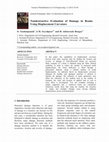
In this paper, the capabilities of displacement curvature
derived from static response data for f... more In this paper, the capabilities of displacement curvature
derived from static response data for finding the location and
severity of damage in Euler-Bernoulli beams are assessed.
Static response of a beam is obtained using the finite element
modeling. In order to reduce the number of measured nodal
displacements, the beam deflection is fitted through a
polynomial function using a limited number of nodal
displacements. An indicator based on displacement curvature
obtained for healthy and damaged structure is utilized to
identify the damage. The influence of many parameters may
affect the efficiency of the method such as the number of
elements, the value and location of applied load as well as
noise effect is investigated. Two test examples including a
simply supported and a cantilever beam are considered.
Numerical results show that using the method, the locations
of single and multiple damage cases having different
characteristics can be well determined.
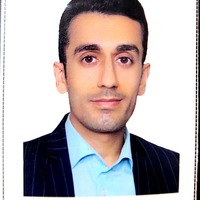
Uploads
Papers by Omid Yazdanpanah
analysis information extracted from a finite element code in MATLAB. After obtaining the mode shapes, the slope and curvature of the plate in each mode are calculated based on central finite difference methods. A
numerical example with and without noise is considered to evaluate the exact location of different damage scenarios. In order to validate the proposed indicator for structural damage detection, the obtained results have been compared with another study which was based on experimental data. Moreover, in order to better assess the performance of the proposed indicator, a comparison has been made between the proposed indicator and two well-known indicators found in the literature. The results indicate that the proposed damaged indicator is able to detect precisely the location of single and multiple damage cases having different characteristics in
plate-like structures.
derived from static response data for finding the location and
severity of damage in Euler-Bernoulli beams are assessed.
Static response of a beam is obtained using the finite element
modeling. In order to reduce the number of measured nodal
displacements, the beam deflection is fitted through a
polynomial function using a limited number of nodal
displacements. An indicator based on displacement curvature
obtained for healthy and damaged structure is utilized to
identify the damage. The influence of many parameters may
affect the efficiency of the method such as the number of
elements, the value and location of applied load as well as
noise effect is investigated. Two test examples including a
simply supported and a cantilever beam are considered.
Numerical results show that using the method, the locations
of single and multiple damage cases having different
characteristics can be well determined.
analysis information extracted from a finite element code in MATLAB. After obtaining the mode shapes, the slope and curvature of the plate in each mode are calculated based on central finite difference methods. A
numerical example with and without noise is considered to evaluate the exact location of different damage scenarios. In order to validate the proposed indicator for structural damage detection, the obtained results have been compared with another study which was based on experimental data. Moreover, in order to better assess the performance of the proposed indicator, a comparison has been made between the proposed indicator and two well-known indicators found in the literature. The results indicate that the proposed damaged indicator is able to detect precisely the location of single and multiple damage cases having different characteristics in
plate-like structures.
derived from static response data for finding the location and
severity of damage in Euler-Bernoulli beams are assessed.
Static response of a beam is obtained using the finite element
modeling. In order to reduce the number of measured nodal
displacements, the beam deflection is fitted through a
polynomial function using a limited number of nodal
displacements. An indicator based on displacement curvature
obtained for healthy and damaged structure is utilized to
identify the damage. The influence of many parameters may
affect the efficiency of the method such as the number of
elements, the value and location of applied load as well as
noise effect is investigated. Two test examples including a
simply supported and a cantilever beam are considered.
Numerical results show that using the method, the locations
of single and multiple damage cases having different
characteristics can be well determined.